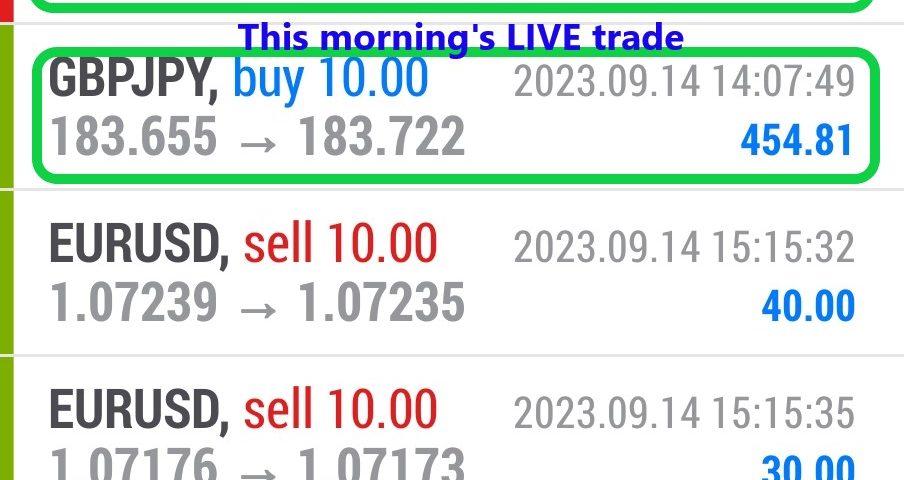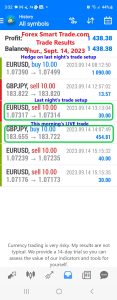Let’s learn how HA candlesticks are calculated and plotted on a chart.
As we mentioned in the previous lesson, to a noob’s eye, they may look like regular candlesticks but they are not.
It’s kind of like being able to tell the difference between a wolf and a dog.
With Heikin Ashi charts and traditional Japanese candlestick charts, you better be able to tell them apart or your trading account might end up bleeding red.
On traditional Japanese candlestick charts, each candlestick represents the open, high, low, and close that the price makes within the current time period.
With Heikin Aishi candlestick charts, each candlestick doesn’t just include price movement within the current time period, it also includes price information from the past.
Calculating Heikin Ashi…
Let’s see how a HA candlestick is calculated and take it one step at a time.
First, let’s throw up a Heikin Ashi chart of GBP/JPY to use as a reference:
As you can see, it’s similar to a traditional Japanese candlestick except that the open and close are calculated differently.
Just like a regular Japanese candlestick, each HA candle has an open, close, high, and low.
The 4 Parts
This means that there are FOUR parts of the Heikiin Aishi formula:
The OPEN of a HA candlestick equals the MIDPOINT of the previous candle.
If you look closely at the chart, you’ll notice that every new candlestick starts from the middle of the previous one.
Open = [(Open price of previous candle) + (Close price of previous candle)] / 2
The CLOSE of each candlestick equals the average value between the four parameters: open, close, high, and low:
Close = (Open + High + Low + Close) / 4
The HIGH of a HA candlestick takes the actual high of the period. This could be the highest shadow, the open, or the close. Whichever is the highest.
High = Maximum Price Reached
The LOW of a Heikin Ashi candlestick takes the actual low of the period. This could be the lowest shadow, the open, or the close. Whichever is the lowest.
Low = Minimum Price Reached
The general idea behind the HA candlesticks is that they smooth the price action.
We minimize much of the market noise shown with traditional Japanese candlestick charts with this candlestick chart.
Summary of Calculation
Here’s a summary of the HA formula:
Heikin Ashi Formula: High = Maximum of High, Open, or Close (whichever is highest) Low = Minimum of Low, Open, or Close (whichever is lowest) Open = [Open (previous bar) + Close (previous bar)] /2 Close = (Open + High + Low + Close) / 4





